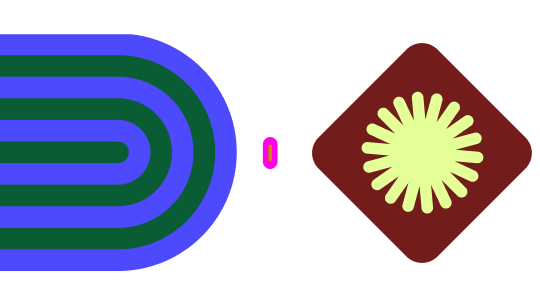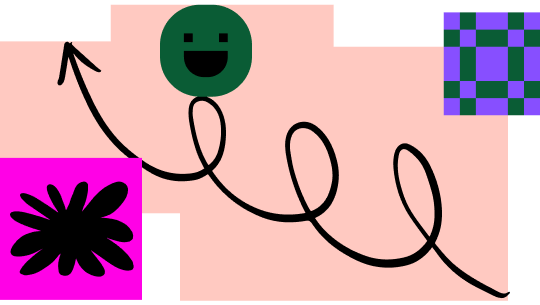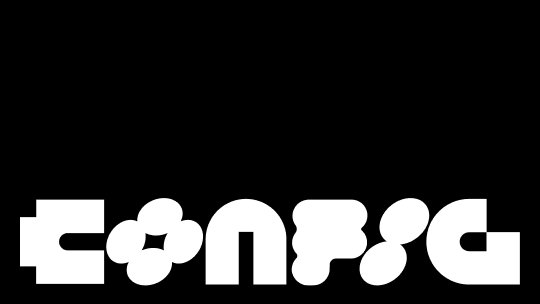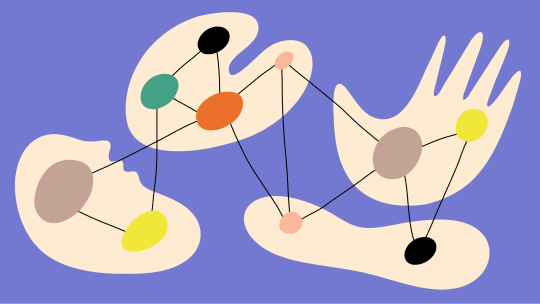DBS Bank, Figma and the digital transformation of finance
Meet DBS—a Singapore-based banking multinational. DBS has been around for 56 years, has 36,000 employees, and 40% of its senior leaders are women.
DBS’s Group Design team has 135 UX designers, researchers, UX engineers and content designers from over twenty different nationalities.
In their own words:
"We're a team that gets things done. We persevere, commit to long-term goals and focus on how putting the customer first can deliver real business value."
This attitude is important to DBS's story because back in 2009 things were not so good. And UX maturity wasn't even a thing as there was no design team.
So, what changed?
What it’s like designing for a highly-regulated industry like banking
Growing UX maturity can look different in different organisations. So it’s important to understand what it’s like to design for a highly-regulated industry.
‘Move fast and break things’ (not so much)
Banking is considered an essential service that should always be available to people. So if the DBS app has an outage, they can get penalised by the government (and rightly so).
If a food delivery app goes down, it is annoying, but not a big deal. If a person can’t access their money, it is a big deal. A very big deal.
What it means is that things take longer. Sometimes, a designer will work on something and see it launched to customers after a year. And it’s not just because DBS needs to do their due diligence, it’s also because some products are very complex. It can take three months or more for new designers to fully understand their product.
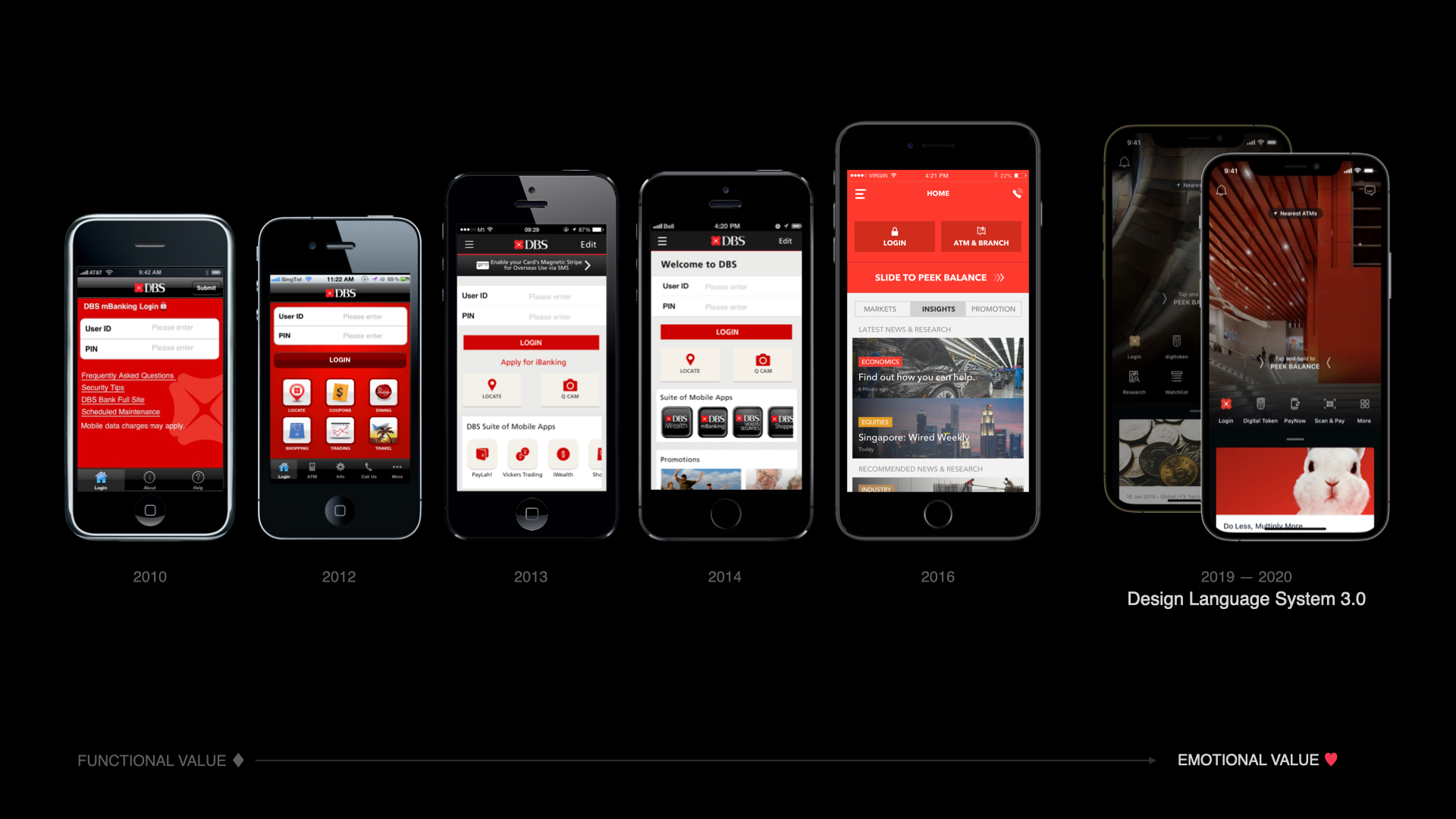
Security is key
Every new tool has to be carefully vetted and onboarded to the DBS secure environment, otherwise, DBS staff may not be able to access it at all. Something as seemingly simple as getting a new font added to a ‘locked Mac’ can be difficult.
Security is one of the reasons why, initially, the design team had to work hard to get permission to use Macs.
Having clear audit trails and version control is also very important at DBS. Every little change to production apps has to be traceable to the people who initiated it and approved it.
Bringing Windows and Mac users together in the browser
In 2022, DBS was named the World’s Best Bank for the fifth year running. And the focus on user-centric design has been an important part of this transformation.
Leo Lin (Senior Vice President, Head of Digital Channel Design Strategy & Design Standards at DBS) joined DBS in 2015. He was one of the first few designers hired for the newly formed DBS UX design team. And he has seen it all...
“I wanted to see how to use design to change the mindset of product development. Thinking of the user first, rather than the feature first. And we needed to come together, as previously we worked in silos.”
Before adopting Figma, DBS used several tools. One core challenge was that while Mac was the weapon of choice for designers, much of the business predominantly uses Windows.
This made having Mac-centric tools limiting. Leo comments that they constantly had to email files, such as PowerPoints, wait for feedback, and then make changes. And they couldn’t collaborate together, which was a pain:
"It was like communicating via a translator on a choppy mobile line. So many misunderstandings," he says.
For example, three years ago, DBS launched a new native mobile experience for customers in Singapore, Taiwan and Indonesia. Not having Figma yet, the team had to export designs as images to gather feedback from multiple teams. And since the business stakeholders could not access the design tool used at the time, the feedback came back in a dizzying array of formats.
"There were emails, PowerPoints, Teams messages, and even WhatsApp. No surprise that stuff got lost or misinterpreted. And when something was approved, it had to be exported as images again so the delivery team could attach them to Jiras. We ended up with a massive backlog of design-related bugs to fix. Some of them got fixed, some did not," says Leo.
Conversely, Figma is browser-based. “It sounds like a simple feature, but working in the browser has been transformational because people on Macs and Windows can work together - immediately and frictionlessly.”
Plus, on Figma’s Enterprise plan, DBS can rest assured that the security considerations that are so important in the financial sector are taken care of. “With Figma Enterprise, we have different levels of access throughout the organisation, and we can protect our designs with trackable logs and single sign-on (SSO),” says Leo.
How the right tools and processes help to increase UX maturity
Things like governance, frameworks and UX maturity can seem like elusive concepts that mainly stay on shiny powerpoints, having very little to do with real life. We’ve definitely seen that happen, but, when executed properly, they can be powerful tools that help to drive change in organisations.
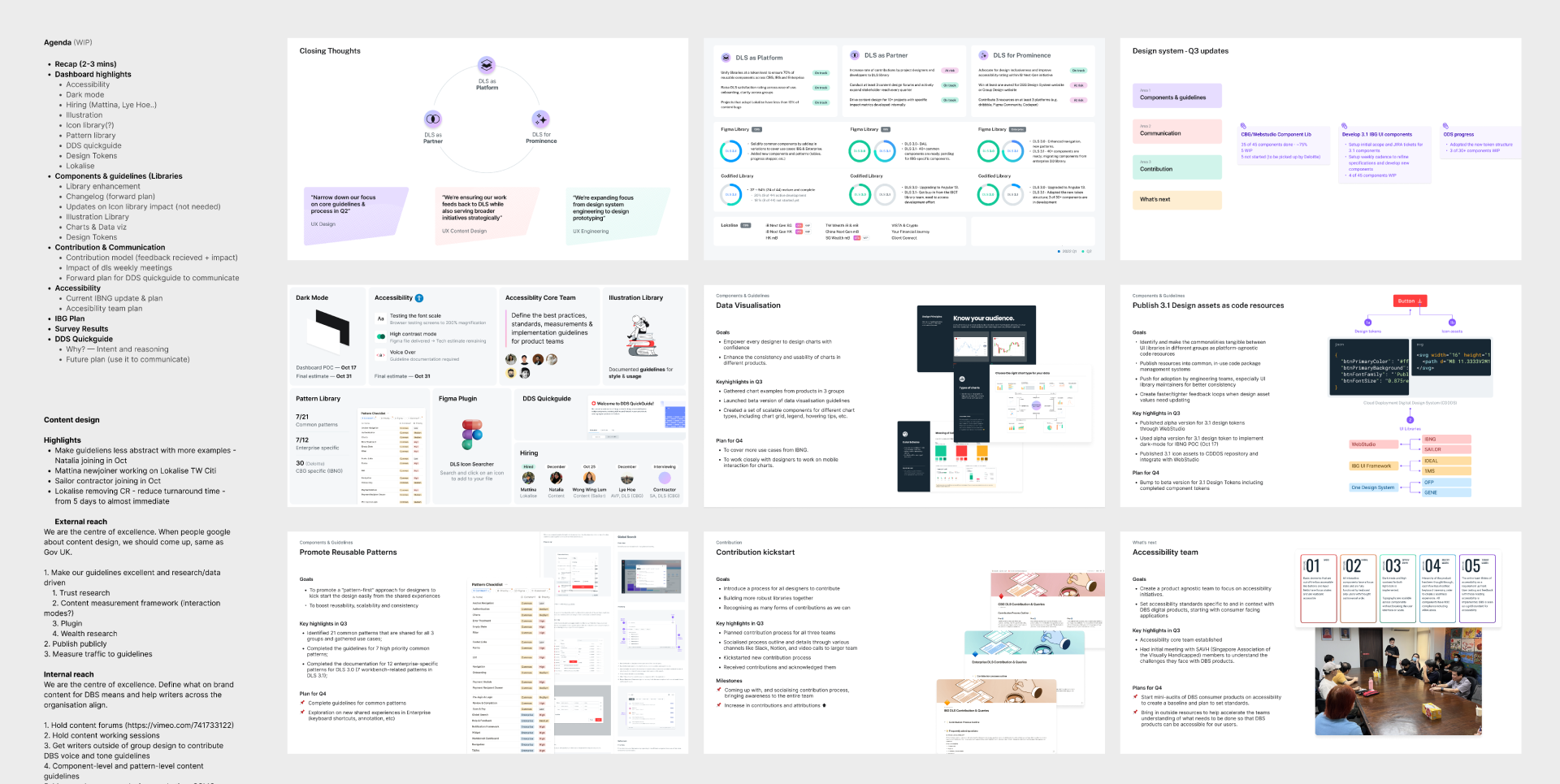
Start with an idea
Why do we need a new tool? It’s a question you will have to answer. You can and should have arguments around improving efficiency at the ready. But it can be more powerful to sell an idea first.
In DBS’s case, the idea was to go beyond numbers.
"Every dollar means something. No one actually wants money," says Leo. "We want what it can give us. So we acknowledge that money is not really about money. We inject emotion into our products to elevate them from transactional to magical. The result? An emotional bond with our customers."
Tools and processes are just a way to get there. If you talk about an idea first, it changes the conversation from ‘the way we work is inefficient’ (no one likes to hear that) to ‘let’s make this big idea happen, and these are the things that can help us get there faster.’
Then break down silos
Collaborate and co-create. It’s not a new idea, but it works. Use tools such as FigJam brainstorm and co-create with your business stakeholders.
"Everyone takes ownership of the product, not just designers," explains Leo.
Collaboration should not be a rare event that occurs in quarterly workshops. It should be part of daily life. This is why having a tool such as Figma is so crucial. You don’t need a Mac or design skills. Everyone can open design files and collaborate in real time.
Embed the new tools in the process
Embedding a new tool in the day-to-day processes of tech, business, design, delivery is not as simple as documenting meeting minutes where everyone agreed to use the new tool. You have to put in a lot of work. For example:
- Has your delivery team updated their user story format to include a Figma link? Or do they still keep attaching images and testing against those?
- Are your business stakeholders opening the Figma links you send them in emails and using the comments function, or do they ask you to export images and send back powerpoints?
- Are developers using the comments feature to discuss edge cases and interaction behaviour or are they ‘winging it’ and your backlog is growing?
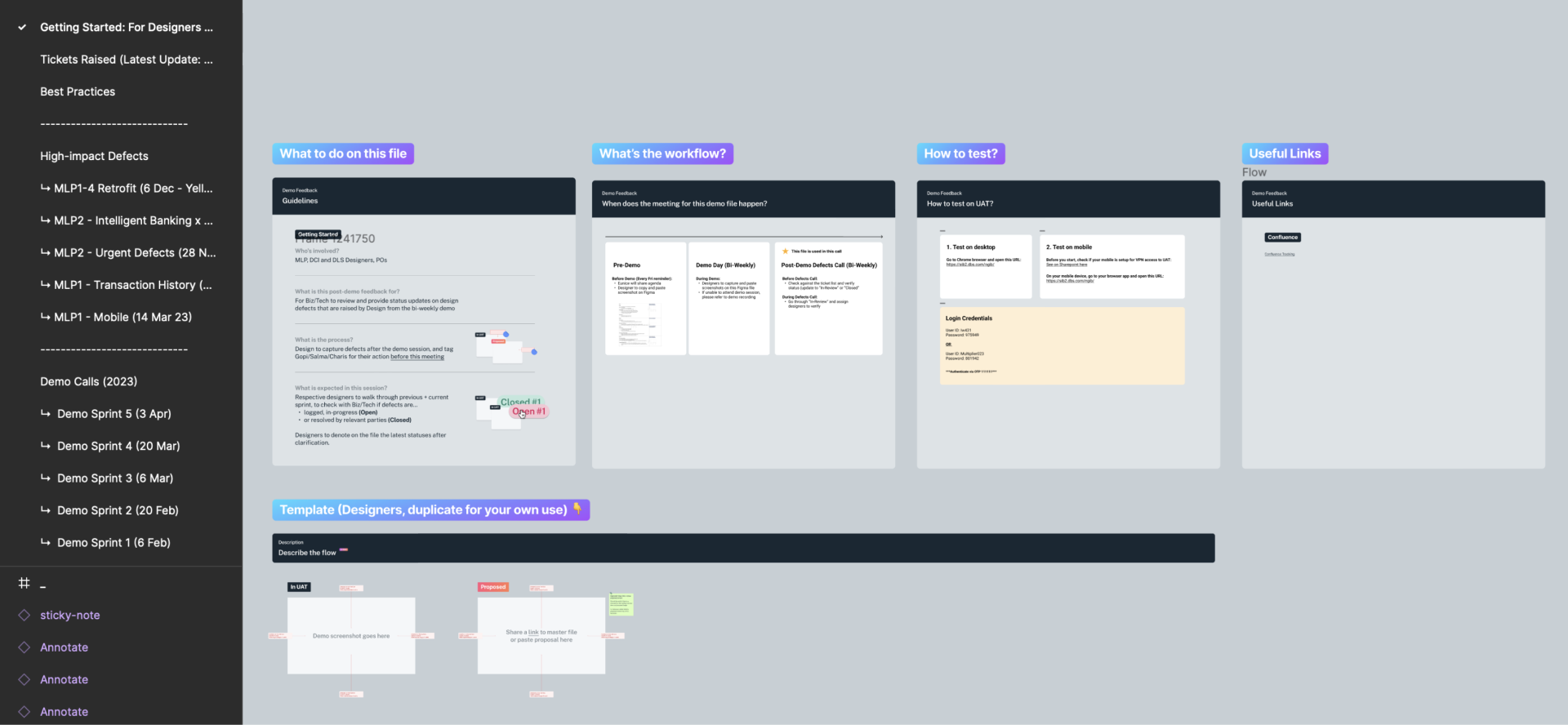
Give up (some) control
Lastly, but, perhaps, most importantly, give up control. If a tool or a process has truly been embraced by an organisation, people will start using it in ways that you didn’t expect. For example, a few of DBS’s product teams have paid for their own Figma edit licenses to collaborate more hands-on with the design team.
Keep an eye on things, but don’t create exclusivity around a tool or a process. If people can’t use it how they need to, they will find a new tool.
What’s next for the DBS design team
- As this case study is being written, DBS is using Figma for an XXL redesign project spanning two countries where more than 25 designers are collaborating with 12 development squads and pretty much every single DBS product team. It’s truly a trial by fire. And so far it’s been going great.
DBS’s top Figma tips for large-scale projects
- Version control matters. DBS has work-in-progress files which, once approved, get moved to a handover folder. Only handover links can be attached to user stories.
- Standardise everything! File naming convention, file structure, note format for indicating changes. Small teams don’t need to worry about this, but big do. A lot of small inconsistencies can have a snowball effect.
- Create Slack/Teams channels with clear purposes and insist on people communicating there. For example, no one wants to deal with five different Slack chats where the same demo feedback is being discussed, and then trying to find what was the final decision made.
- If you have a design producer (and you should), send them a big bunch of flowers/cake/puppies. We wouldn’t last a day without them.
State of the Designer APAC report
Discover how APAC product designers are changing up their workdays and redefining how they connect with colleagues.
See how Figma can help you scale design
Great design has the potential to differentiate your product and brand. But nothing great is made alone. Figma brings product teams together in a fast and more inclusive design workflow.
Get in touch to learn more about how Figma can help companies scale design.
We’ll cover how Figma can help:
- Bring every step of the design process—from ideation, to creation, to building designs—into one place
- Accelerate design workflows with shared company-wide design systems
- Foster inclusivity in the product team process with products that are web-based, accessible, and easy to use
